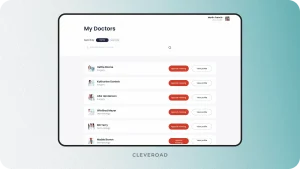
Let’s be honest. The phrase “working out” can feel like a cruel joke when you’re managing chronic pain. The old “no pain, no gain” mantra? Throw it out. Seriously. It’s not just unhelpful; it’s harmful. But what if movement could be your ally instead of your enemy?
That’s the promise of adaptive workouts. This isn’t about pushing through. It’s about tuning in. It’s a fluid, responsive approach to fitness that honors your body’s ever-changing needs. Think of it less like a rigid military drill and more like a gentle, ongoing conversation with your own physiology.
What Are Adaptive Workouts, Really?
At its core, an adaptive workout is a flexible exercise regimen designed to accommodate physical limitations. It’s the opposite of a one-size-fits-all program. Instead, it’s a personalized toolkit. You learn to modify, adjust, and pivot based on how you feel today.
Maybe yesterday you could do a full set of leg lifts. But today, your hip is singing a different tune. An adaptive approach says, “Okay, let’s try a gentler range of motion, or maybe we focus on upper body instead.” It’s about working with your pain, not against it.
Why Movement is Non-Negotiable (Even When It Hurts)
It sounds counterintuitive, right? “I’m in pain, so I should rest.” And sure, rest is crucial. But prolonged inactivity can actually make chronic pain worse. It leads to muscle weakening, joint stiffness, and can even heighten pain sensitivity. It’s a vicious cycle.
Adaptive movement helps break that cycle. Gentle, mindful exercise can:
- Release endorphins: Your body’s natural pain-relieving chemicals.
- Improve strength and stability: Supporting your joints and reducing strain.
- Increase blood flow: Delivering oxygen and nutrients to tired, achy tissues.
- Distract the nervous system: Giving your brain something else to focus on besides the pain signals.
Building Your Adaptive Toolkit: Key Principles
Okay, so how do you actually do this? Here are the fundamental principles to guide you. Honestly, these are more important than any specific exercise.
1. Listen to Your Body’s Whispers (So You Don’t Hear Its Screams)
This is the golden rule. Learn to differentiate between the “good hurt” of muscle fatigue and the “bad hurt” of sharp, shooting, or joint pain. The former is often okay; the latter is a hard stop. If an exercise causes a pain flare, note it and adapt. It’s not a failure; it’s data.
2. Master the Art of the Modification
Every single exercise has a regression and a progression. Can’t do a full push-up? Do them against a wall. Squats too much? Try sitting-to-stands from a sturdy chair. The goal is to find the version that challenges you without crossing your pain threshold.
3. Consistency Over Intensity
Forget hour-long, high-intensity sessions. Ten minutes of gentle movement every day is infinitely better than one brutal workout that leaves you bedridden for a week. Small, consistent efforts build resilience over time.
Sample Adaptive Exercises to Get You Started
Here’s a look at some foundational movements and how you can adapt them. Remember, start small. You know, just test the waters.
| Exercise Goal | Standard Version | Adaptive Version |
|---|---|---|
| Lower Body Strength | Bodyweight Squats | Chair Squats (sitting down and standing up slowly, using hands for support if needed) |
| Core Stability | Plank | Incline Plank (hands on a wall or sturdy table) or simple Pelvic Tilts lying down |
| Upper Body Strength | Push-ups | Wall Push-ups or Seated Resistance Band Presses |
| Mobility & Flexibility | Standing Toe Touches | Seated Hamstring Stretches or Gentle Cat-Cow poses on all fours |
Weaving It All Together: Creating Your “Pain-Friendly” Routine
So you have some principles and some exercises. How do you build a routine that sticks? Here’s a simple, adaptable framework. Think of it as a recipe you can tweak endlessly.
- Check In: Before you move, take 60 seconds. Scan your body. Where is the pain today, on a scale of 1-10? What feels tight? What feels okay? This sets your intention.
- Warm-Up Gently: 3-5 minutes of easy movement. Arm circles, marching in place, neck rolls—anything to wake the body up without startling it.
- Pick 2-3 Focus Areas: Don’t try to do everything. Maybe today it’s legs and core. Tomorrow, it’s upper body and mobility. This prevents overexertion.
- Practice, Don’t Perform: Go through your chosen exercises with a focus on form and feeling, not on reps. Stop well before exhaustion.
- Cool Down & Reflect: End with 5 minutes of deep stretching or simply lying on your back. How do you feel now compared to when you started?
The Mind-Body Connection You Can’t Ignore
It’s almost impossible to talk about chronic pain management without mentioning the nervous system. Chronic pain often keeps your body in a state of high alert—a constant “fight or flight” mode. Adaptive workouts, especially when paired with mindful breathing, can help dial that response down.
Practices like Tai Chi, Qigong, or gentle yoga are phenomenal for this. They blend slow, deliberate movement with breath awareness, telling your nervous system, “Hey, we’re safe here.” It’s a powerful combination.
A Final, Gentle Nudge
Living with chronic pain is a journey of a thousand tiny adjustments. Some days will be better than others, and that’s perfectly normal. The goal of adaptive fitness isn’t to “cure” you. It’s to return a sense of agency to you. It’s to prove that even on the hard days, you can still engage with your body in a way that feels respectful, maybe even empowering.
It’s not about winning a race. It’s about learning the unique, ever-changing rhythm of your own body—and finding a way to move to it.








